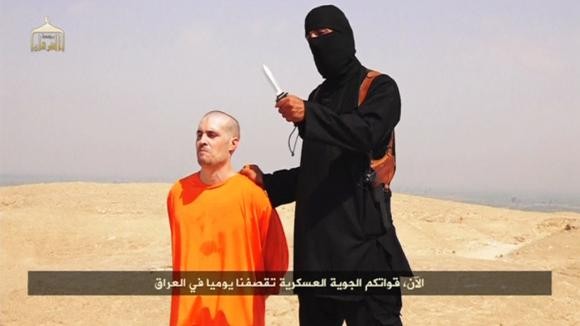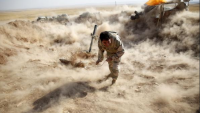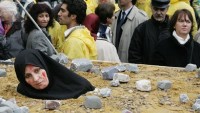Islamic State Hostages Suffered Torture Before Beheading – Report
| Kristina Fernandez | | Oct 27, 2014 08:59 AM EDT |
(Photo : Reuters )
The four Islamic State hostages whose barbaric beheadings made headlines around the world over the past three months suffered extreme forms of physical torture, according to a report detailing the life of foreign captives with the jihadists.
The New York Times pieced together the events surrounding the struggle for survival of journalists James Foley and Steven Sotloff, and aid workers David Haines and Alan Henning to reveal for the first time the hidden ordeal they suffered in the hands of their brutal captors.
Like Us on Facebook
The report is based on the accounts of five former hostages, eye witnesses and people who were involved in attempts to free the prisoners before they were slain.
The Times revealed that the Americans and the Britons were just four of the hundred hostages held in the underground network of Syrian prisons.
Their captivity coincided with the rise of the Islamic State, then known as the Islamic State of Iraq and Syria, who later became the dominant rebel group in the region and subsequently took control of the foreign captives.
For months, Foley and his fellow prisoners suffered excruciating physical tortures, including severe beatings, starvation and waterboarding.
According to the report, the four were singled out for the worst tortures, largely for their governments' refusal to pay ransom and for the militants' deep hatred of the United States and the UK.
According to a former Belgian captive, 19-year-old Jejoen Bontinck, the British trio who guarded them, among them the notorious Jihadi John of the beheading videos, seemed to have taken pleasure in brutalizing Foley and British photojournalist John Cantlie.
Bontinck spent three weeks in the same prison cell as Foley in 2013.
Other former hostages said the person who was treated the cruelest was Foley. They said he underwent prolonged beatings and mock executions, and was repeatedly waterboarded, a form of torture meant to simulate drowning.
Their testimonies tell that the tortures were often so severe they were relieved when Foley came back to their cell bloodied. They knew Foley suffered worse when he returned without blood.
Previously held captive by rebel and jihadist groups that were vying for the establishment of a caliphate in the region, 15 of Foley's fellow prisoners were released one by one after their countries agreed to make ransom payments.
By June, only seven of them remained: the four Americans and the three British citizens.
Of this group, three are believed to be still alive - Peter Kassig, an emergency medical technician who earlier this month was threatened to be executed next, one unnamed American woman, and Cantlie, who was captured with Foley and has appeared recently in Islamic State propaganda videos.
TagsIslamic State torture hostages before beheadings, ISIS, ISIS foreign hostages, james foley, Steven Sotloff, David Haines, Alan Henning, Peter Kassig, ISIS beheading videos
©2015 Chinatopix All rights reserved. Do not reproduce without permission
EDITOR'S PICKS
-

Did the Trump administration just announce plans for a trade war with ‘hostile’ China and Russia?
-

US Senate passes Taiwan travel bill slammed by China
-

As Yan Sihong’s family grieves, here are other Chinese students who went missing abroad. Some have never been found
-

Beijing blasts Western critics who ‘smear China’ with the term sharp power
-

China Envoy Seeks to Defuse Tensions With U.S. as a Trade War Brews
-

Singapore's Deputy PM Provides Bitcoin Vote of Confidence Amid China's Blanket Bans
-

China warns investors over risks in overseas virtual currency trading
-

Chinese government most trustworthy: survey
-

Kashima Antlers On Course For Back-To-Back Titles
MOST POPULAR
LATEST NEWS
Zhou Yongkang: China's Former Security Chief Sentenced to Life in Prison

China's former Chief of the Ministry of Public Security, Zhou Yongkang, has been given a life sentence after he was found guilty of abusing his office, bribery and deliberately ... Full Article
TRENDING STORY

China Pork Prices Expected to Stabilize As The Supplies Recover

Elephone P9000 Smartphone is now on Sale on Amazon India

There's a Big Chance Cliffhangers Won't Still Be Resolved When Grey's Anatomy Season 13 Returns

Supreme Court Ruled on Samsung vs Apple Dispute for Patent Infringement

Microsoft Surface Pro 5 Rumors and Release Date: What is the Latest?













